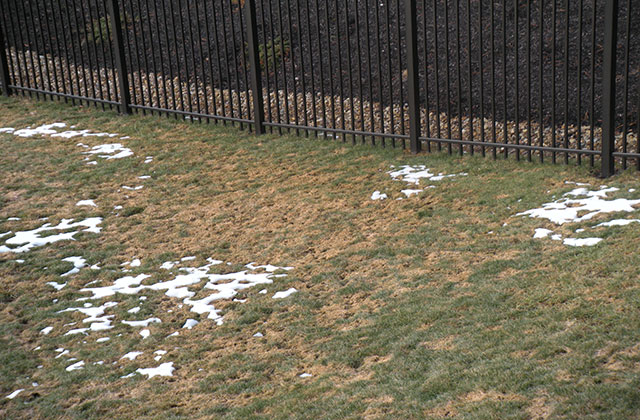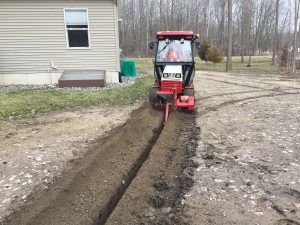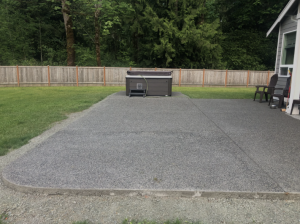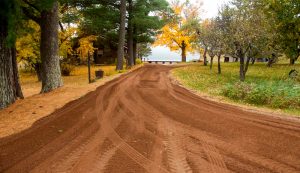Winter Lawn Damage: Has winter weather taken a toll on your lawn?
The smell of fresh, green grass is one of the very best things about spring, but that simple pleasure can be ruined if the snow recedes and you discover your grass is looking less than perfect. Thinned out, diseased turf, and even dead patches commonly occur even on otherwise good lawns when winter’s poor growing conditions take their toll.
Winter lawn damage is a common problem in Maine, but it doesn’t have to mean your hopes of a beautiful lawn are shattered. We can restore your lawn to one you’ll be proud of.
We can renovate your winter-damaged lawn
We can easily repair whatever damage has been done. In fact we have services that have been specifically designed for this purpose.
- Aerate to help dry out the soil and promote fertilizer and water intake
- Thatch lightly to comb out dead grasses
- Seed and mulch to
- Provide new and improved grass varieties
- Increase the number of plants per unit of area
- Replace grass plants that may have died over the winter
FYI – What Causes Damage To Lawns In Winter
There are a number of common causes of winter damage on turf, most of which are environmental. Depending on the cause of your lawn damage, there may be extra precautions we can take to avoid it in the future. Do any of these sound familiar?
- Crown Hydration. When warm weather is followed by a sudden freeze, turf grasses that have absorbed a great deal of water can expand and freeze, killing the crown. This is most common in later winter and early spring. There’s not much you can do to avoid it, however.
- Snow Mold. Sometimes, when snow cover recedes, a pink or gray crusty becomes visible on lawns. This is snow mold. As the area dries out from the snow melt, snow mold generally dies, but some turf may be severely infected or already dead. The best control for snow mold is improving drainage, de-thatching and lawn aeration to increase the air circulation around the turf grass crowns.
- Voles. These furry, four- to six-inch long mammalian pests love to create runways on the lawn, just beneath the snow. Many people attribute the damage to moles however if you’ve got trampled, narrow bands of damage or areas where the grass and root are eaten completely, it’s most likely caused by the mouse-like vole.
- Winter Desiccation. Your grass tends to continue to transpire even when cold, dry winds blow, but the ground’s frozen solid. This natural method of moving waste products like detaching oxygen out of their systems also removes water from the equation. If the turf’s roots are frozen solid, there’s nothing to replace the missing water with. Eventually this causes cell death that results in tan or brown leaves and even crown death if desiccation is severe.




